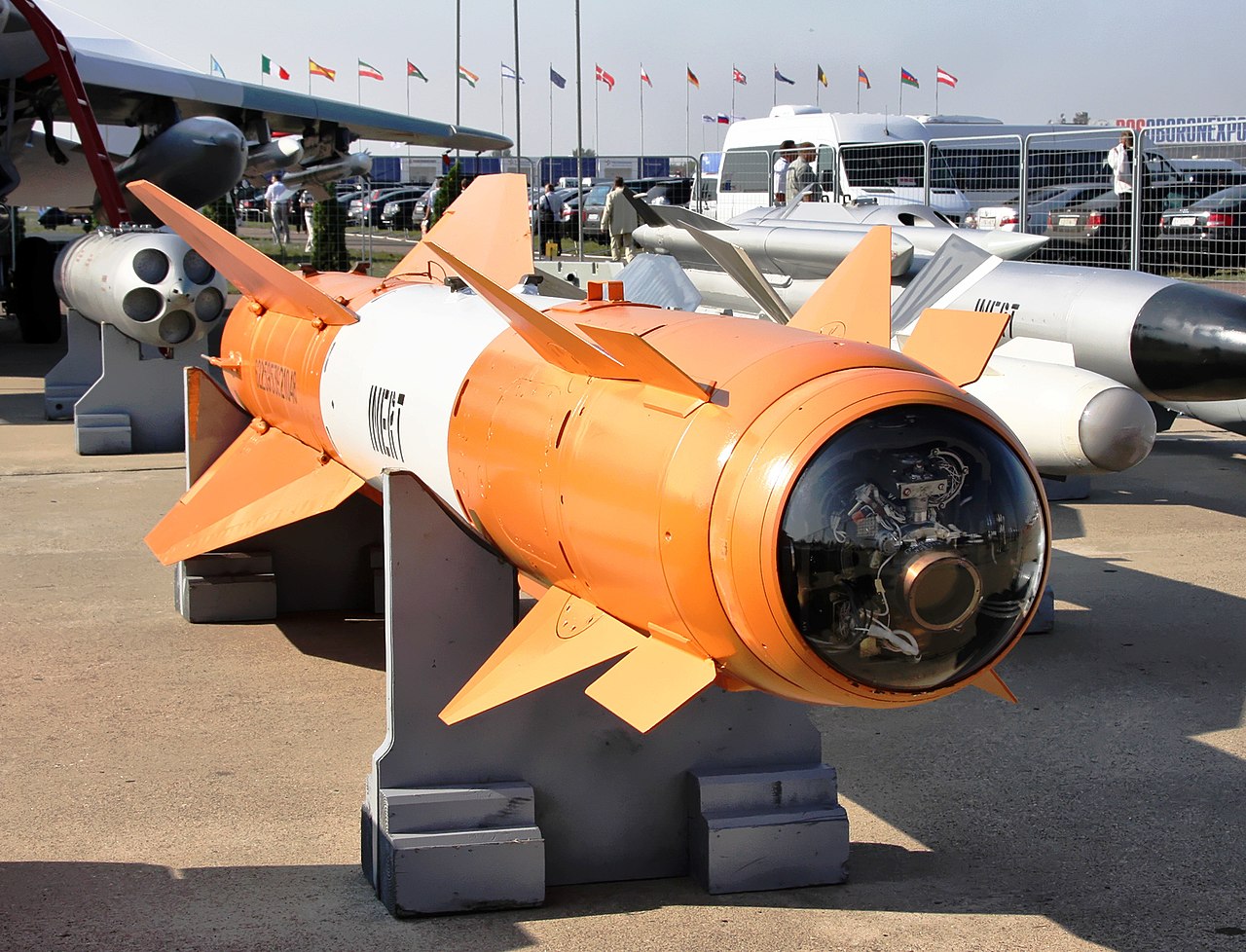Russia appears to be relying heavily on its Kh-29 missile for precision attacks on Ukraine along the frontline where it dominates the skies, going by the number of times the missile is seen in video footage of Russian air operations released by the Russian MoD.
The Kh-29 ASM appears to be a favourite of Russian forces for attacks on tactical hardened targets, going by the number of times it appears in RuMoD videos! pic.twitter.com/PtuQwnrntg
— Vijainder K Thakur (@vkthakur) October 25, 2022
Frequent and continued use of the missile since the start of the Russian Special Military Operation (SMO) belies western claims that, as a result of western sanctions, Russia is running out of precision-guided munitions (PGMs).
Indeed, Dmitry Medvedev, deputy chairman of the Security Council, claimed on October 24, 2022, that the production of weapons and special equipment in Russia had increased several times.
In a post on his Telegram channel, Medvedev wrote, “Reading enemy analytics, I have repeatedly come across statements that military equipment and weapons in demand in Russia will soon run out. Like everything has been spent. Do not hope. The production of weapons and special equipment is increasing many times in all directions: from tanks and guns to high-precision missiles and drones. Wait! “
A video released by the Russian MoD on October 24 shows a Su-34 fighter bomber attacking a target from medium altitude with Kh-29 missiles.
“The high-precision air-to-surface missile is designed for destroying strong points and fortifications,” says the Russian MoD.
In the video, a Su-34 is seen carrying 2 Kh-29 missiles on its inner pylons and 2 RVV-MD close combat missiles on its outer pylons. The latter is for self-defense in case of a chance encounter with a Ukrainian fighter.
After the attack, the Su-34 is seen landing back at the base, still carrying the RVV-MD missiles.
Earlier, Eurasian Times analyzed a Russian MoD video that showed a Su-30SM configured for swing role operations. The fighter first attacked a ground target using Kh-29 missiles and then, according to the Russian MoD, went on to shoot down a Ukrainian fighter.

Reason For Russian Reliance On Kh-29
For a brief period at the start of the SMO, Russia established air dominance over entire Ukraine by crippling Ukrainian air defense radar and missile systems; and putting their fighter bases out of operations.
However, Ukrainian ground forces didn’t collapse under the onslaught, and gradually Ukrainian air defenses regained lethality over Western and Central Ukraine.
Russian forces then switched almost exclusively to relying on surface, air, and sea-launched long-range cruise missiles to attack targets in Central and Western Ukraine. Lately, Russia has also started using long-range kamikaze drones to attack infrastructure targets in Western and Central Ukraine.
As far as East Ukraine is concerned, Russia continues to dominate the skies, but only at medium altitudes. At low altitudes, Ukrainian MANPADS pose a risk to Russian fighters.
Under the circumstances, the Kh-29 is the perfect weapon for attacking visually observed hardened ground targets, such as big railway and highway bridges, industrial installations, concrete runways, aircraft in reinforced concrete shelters, and hardened defensive positions.
Using Kh-29, Russian fighters can stay clear of the operational envelope of MANPADs.
There are two variants of the Kh-29 missile – Kh-29L and Kh-29TE. The Kh-29TE missile is equipped with a passive TV guidance system and the Kh-29L – with a semi-active laser guidance system using reflected laser illumination.
The missiles are armed with a high explosive penetrating warhead and an impact target sensor. They are powered by a single-mode solid-fuel rocket engine.
Both TV guidance and semi-active laser homing give the missile pinpoint accuracy. Rocket propulsion provides the missile with a lot of momentum, aiding in destruction and penetration. Cruise missiles or kamikaze drones, in contrast, lack the accuracy and the destructive power of the Kh-29.
Lock on Before Launch (LOBL)
The optical seeker of the Kh-29 can be locked to the target before release. Once locked, the optical seeker holds the lock even during maneuvers. That is, the aircraft can change speed, descend or rise by 1000m, and deviate by 30 degrees – this will not affect the accuracy of the hit.
In the video footage, you can see the Su-34 turning away almost immediately after launch.
To summarise, Russian air dominance at medium altitudes in East Ukraine allows the Kh-29 to be used freely and effectively.
Its accuracy, warhead size, and impact speed give the missile a lot of destructive power. Continued production facilitates the use of the missile as and when required. So it’s no surprise the missile appears to be the weapon of choice in the Russian tactical air campaign.
- Vijainder K Thakur is a retired IAF Jaguar pilot. He is also an author, software architect, entrepreneur, and military analyst.
- Reach out to the author at vkthakur (at) gmail.com
- Follow EurAsian Times on Google News




